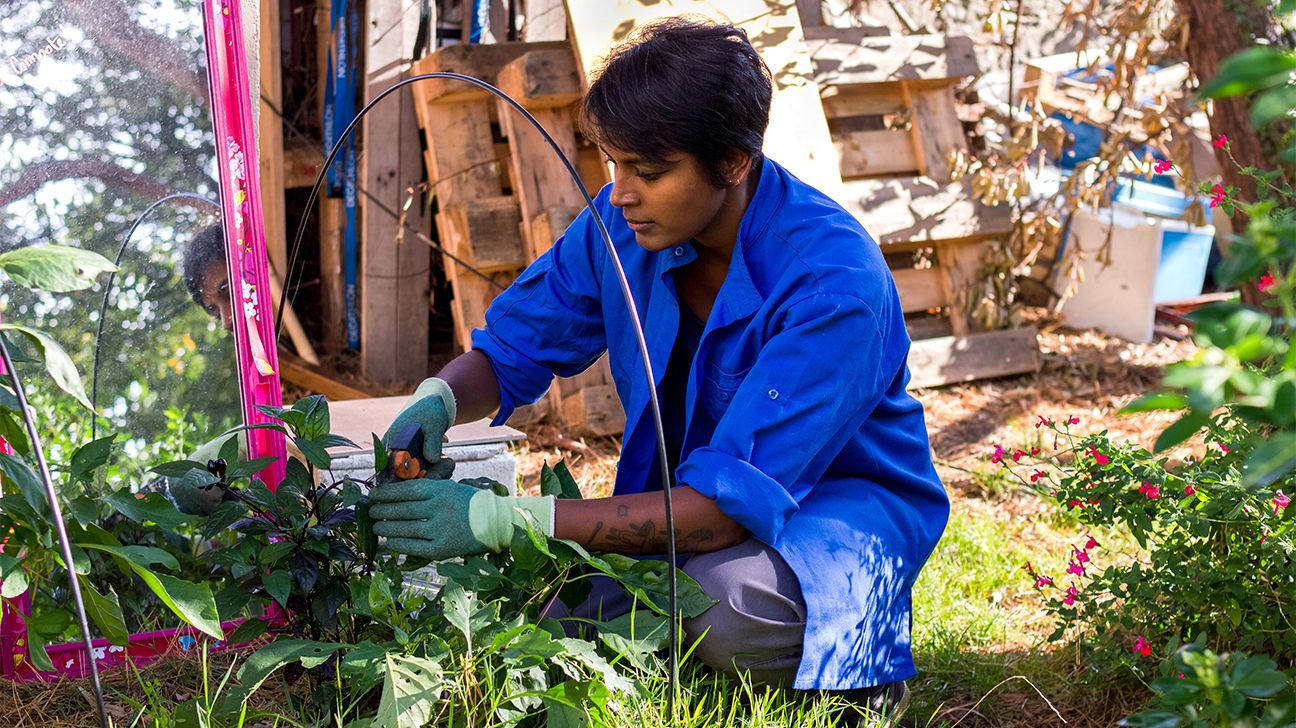Budding Gardeners Invite: Newbie Gardening Basics and Beyond
Wiki Article
From Beginner to Eco-friendly Thumb: A Step-by-Step Trip With the Art of Horticulture
:max_bytes(150000):strip_icc()/close-up-of-a-women-watering-vegetables-in-a-raised-bed-1407277094-c63fd1ff0a21406ebf17c51ac6c6f2d1.jpg)
Recognizing Your Gardening Space
To begin your gardening journey, it is vital to comprehend the distinct features and restrictions of your horticulture space. Are there any kind of specific difficulties you may encounter, such as bad soil top quality or minimal water accessibility? Recognizing these elements will help you make educated decisions regarding the kinds of plants that will certainly flourish in your room.Think about the dimension of your horticulture location. You may require to focus on container gardening or vertical gardening to optimize your expanding area if you have a tiny area. On the other hand, if you have a large space, you have the deluxe of planting a selection of plants and creating various areas within your garden.
Next, examine the quantity of sunlight your area gets. This will certainly figure out which plants will certainly flourish and which ones may battle. You can decide for shade-loving plants like ferns or hostas if your room is shaded. If your space gets complete sunlight, you can grow a vast array of plants, including vegetables, herbs, and blossoms.
Finally, think about any kind of constraints or obstacles specific to your room. If your dirt quality is bad, you may need to amend it with garden compost or choose plants that are tolerant of less-than-ideal conditions. You can decide for drought-tolerant plants or implement water-saving strategies like mulching. if water is limited.
Picking the Right Plants for Your Garden
Select plants that are appropriate to your garden's unique conditions and your personal choices. When choosing plants for your garden, it is essential to consider aspects such as sunlight, soil type, and climate. Take an appearance at the quantity of sunshine your garden gets throughout the day. Some plants grow completely sun, while others favor partial or perhaps complete shade. Consider the soil key in your yard also. Some plants favor well-drained soil, while others flourish in wet or clay-like soil. Additionally, take right into account the climate in your area. Some plants are better fit for hot and dry climates, while others can endure cooler temperatures.It's also worth taking into consideration the maintenance level of the plants you pick. Some plants call for even more care and attention, while others are extra low-maintenance.
Preparing the Dirt for Planting
Many plants prefer a slightly acidic to neutral pH, around 6.0 to 7.0. Poorly drained pipes soil can lead to waterlogged origins and other plant wellness concerns. By evaluating and making required amendments to your dirt, you can develop an optimal atmosphere for your plants to grow.Nurturing and Maintaining Your Yard
As soon as you have actually prepared the soil, it's time to get your hands filthy and start supporting and maintaining your garden. The key to an effective yard corresponds care and interest. Watering is critical, specifically during dry spells. See to it to sprinkle your plants deeply, enabling the water to penetrate the soil and get to the origins. Regular weeding is additionally essential to keep your garden devoid of unwanted plants that complete for nutrients and area. Draw out any type of weeds, taking treatment to remove their origins to prevent them from returning. Furthermore, it's necessary to give appropriate nutrition for your plants. Think about utilizing natural plant foods or garden compost to enrich the dirt and advertise healthy and balanced growth. Pruning is one more important job to keep your yard looking neat and encourage much better air flow and sunshine infiltration. Trim off any type of damaged or dead branches to keep the overall wellness of your plants. Be on the lookout for diseases and bugs. Regularly check your plants for any kind of signs of problem or illness and take instant action to avoid additional damage. By following these nurturing and upkeep techniques, you will ensure a flourishing and attractive garden.Troubleshooting Common Gardening Issues
To deal with common horticulture issues, beginning by recognizing the issue and taking prompt action. Among the most usual issues gardeners encounter is pests. You may have a bug invasion if you see eaten fallen leaves or plants that are wilting for no apparent reason. Inspect your plants carefully for signs of bugs or various other parasites. If you identify any kind of, eliminate them manually or utilize organic bug control techniques. An additional common issue is nutrient deficiency. They may not be getting enough nutrients if your plants have actually yellow or discolored fallen leaves. Consider fertilizing your dirt or including garden compost to boost its nutrient web content. Overwatering is an additional issue that can hurt your plants. If you discover waterlogged soil or wilting in spite of sufficient watering, you might be overwatering. Adjust your watering schedule newbiegardening.com/ as necessary and make sure correct drainage. Disease can also affect your yard. If you see places, mold and mildew, or uncommon development on your plants, maybe an indication of illness. Remove affected plants and treat the staying ones with organic fungicides or pesticides. By immediately addressing these usual problems, you can make sure the health and success of your yard.Conclusion
By understanding your horticulture space, selecting the right plants, preparing the dirt, and supporting your yard, you have gotten over typical gardening problems like a pro. Now, equipped with knowledge and experience, you are ready to delight in the appeal and abundance of your growing garden.
When selecting plants for your garden, it is vital to consider factors such as sunshine, dirt type, and environment. Some plants choose well-drained dirt, while others prosper in clay-like or wet dirt (newbie gardening). By comprehending your gardening room, choosing the right plants, preparing the dirt, and nurturing your garden, you have actually gotten over usual gardening problems like a pro
Report this wiki page